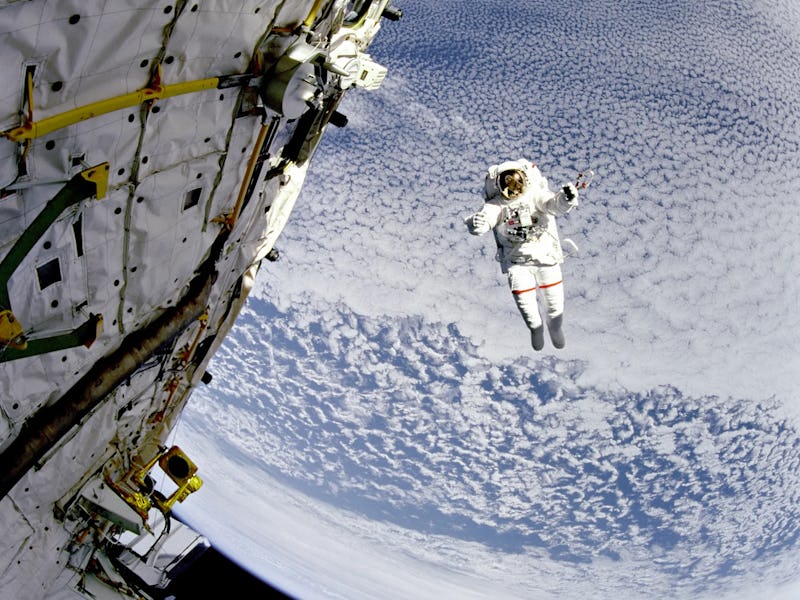30 Years Ago, NASA Tested This Bizarre Safety Backpack To Keep Astronauts From Getting Lost In Space
Spacewalking is amazing yet incredibly dangerous.

30 years ago today, a NASA astronaut tested a backpack designed to save someone floating through space uncontrollably.
Spacewalking is beautiful, yet risky. When an astronaut steps outside the confines of their spacecraft, no barrier limits their weightless motions. Generally, astronauts remain tethered to their craft by a cable. But if this connection is severed, the backup plan is a backpack.
On September 16, 1994, NASA astronaut Mark C. Lee tested out SAFER, or the Simplified Aid for EVA Rescue (SAFER) system. It sits on the back of the spacewalking suit. In the event an astronaut goes rogue, SAFER would push them back.
SAFER uses 24 small nitrogen-gas thrusters that astronauts can manipulate using a small hand controller on the front of their spacesuit,according to the European Space Agency. Its key design feature is its ability to stabilize a tumbling astronaut, allowing the vulnerable spacefarer to regain control.
Astronaut Mark C. Lee tested out the Simplified Aid for EVA Rescue (SAFER) system on September 16, 1994.
This “propulsive self-rescue,” as NASA calls it, could kick in if an astronaut doesn’t immediately use a grapple to reconnect themselves to the spacecraft. It also avoids a scenario where a second astronaut would have to intervene, which may require a rendezvous thousands of feet away from the vehicle.
Astronaut Lee flew aboard the Space Shuttle Discovery as part of the STS-64 mission. According to a NASA image description, this SAFER test was just the first part of a larger program to demonstrate the system in flight, validate its performance, and develop a production version for later spaceflights.
Astronauts Carl J. Meade and Mark C. Lee (red stripe on suit) test the new Simplified Aid for EVA Rescue (SAFER) system. Here, Lee is anchored to the space shuttle Discovery's Remote Manipulator System robot arm.
Today, astronauts use virtual reality to train for SAFER. In this VR setup, they must return to the International Space Station after being thrown off the platform at 1 kilometer per hour whilst rotating. “Usually, each astronaut trains each orientation multiple times before being required to pass with a final certifying test,” according to ESA.
Hopefully systems like SAFER will keep the nightmare of an untethered astronaut perpetually in the realm of science fiction, and never become a real disaster.